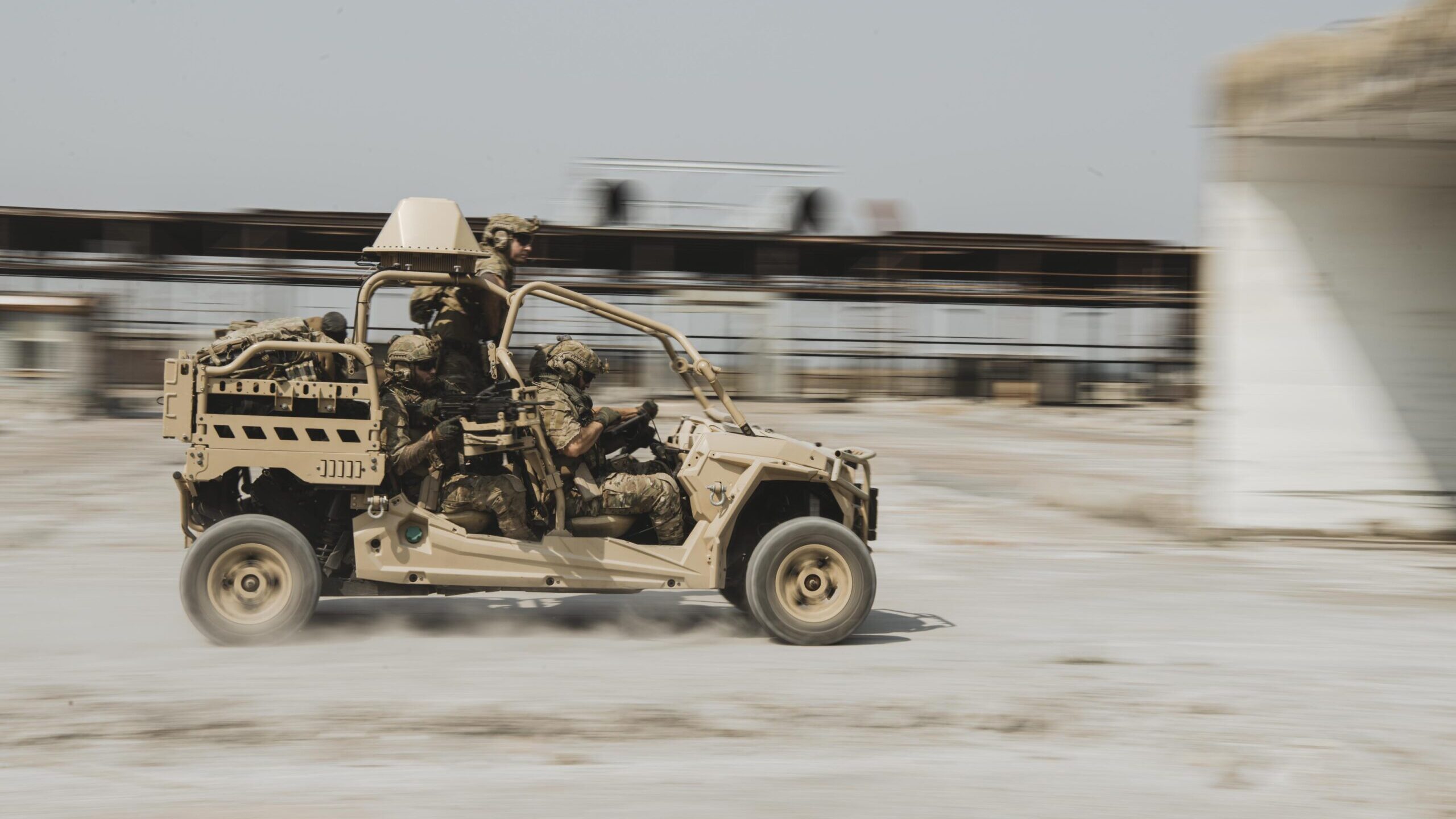
The DroneSentry-X system, produced by Australian counter-UAS firm DroneShield, can be installed on vehicles. (DroneShield)
BEIRUT — The aptly named Australian counter-drone firm DroneShield is riding the global wave of interest in counter-unmanned aerial systems (cUAS) capabilities, looking to expand its “footprint” into the Middle East, according to the firm’s CEO.
“We are actively targeting [the region], and once we hopefully get enough work that will justify setting up the office and doing local manufacturing we will” have a presence there, CEO Oleg Vornik told Breaking Defense in a July interview. “Our view is we’ll wait until there is, enough meat on the bone for us to start doing some of the assembly locally and then we’ll set up potentially as a joint venture with a local operator already in a region.”
“We already have contracts with Saudi government agencies, Jordan and Kuwait, and we are planning on increasing our footprint in the region,” Vornik said.
Vornik’s mention of the potential for local manufacturing is key, as Gulf nations, especially, have recently mandated that as a condition for foreign firms to work within their borders.
“We are not adverse to that in our view. And we have been talking about it with Middle East customers. But first we have to seal a contract and then detail technology transfer accordingly,” he said.
DroneShield, which is based in Sydney but also has offices in the US and UK, is something of a boutique defense contractor, focusing primarily on different tech to defeat the threat from unmanned systems — a threat highlighted during the conflict in Ukraine, and one about which the world’s militaries have increasingly become nervous.
RELATED: To counter drones, US Army seeks layers rather than ‘silver bullets’
Earlier this year the company announced a $9.9 million contract with an unidentified Five Eyes nation and then a $33 million contract with an unidentified US government agency. Vornik, who declined to identified the customer nation or agency in those deals, said he expects his company’s year-end revenues to be multiples of the approximately $17 million in 2022.
As Breaking Defense has previously reported, Middle Eastern nations’ interest in counter-drone and air defense tech in general has been surging in recent years not only due to Ukraine’s experience, but from some of its own deadly incidents related to the conflict in Yemen, prompting purchases of American systems, partnerships with Asian firms and sky-high interest in systems developed by historical rival Israel.
Vornik said that one of the products seeing the most interest in the region lately is the firm’s DroneSentry, an automatic system that is mounted around a facility designed to neutralize drones without necessarily human intervention. He added that the trends to protect facilities are evolving from portable platforms to fixed side systems over the last five or so years.
Samuel Bendett, a defense analyst with a focus on cutting edge military tech at the Center for Naval Analyses, said the Middle East makes a natural market for a counter-drone firm.
“The Middle East is already dealing with the drone threat and the growing sophistication of drone attacks in many countries,” he said. “There is an emphasis on having cUAS tech address threats from large, medium and small drones, both military grade and those made from commercial technologies. Its a safe long-term assumption that the cUAS market in the Middle East is going to grow.”
Ukraine reveals ‘war in the future’
As the war in Ukraine progresses, the need for drones and counter-drone solutions has become ever apparent, Vornik said.
“Ukraine has shown the need for counter-drone equipment. Drones and counter drone equipment is the war in the future and in the military […] you fight the next war, not the last war,” he said.
Bendett said the conflict has revealed not only the popularity of drones, but has shown which kinds appear to be the most effective.
“In Ukraine, the trend is towards greater use of FPV-type drones, while at the same time increasing the FPV range and capacity,” he said, referring to First Person View. “There is a continued reliance of kamikaze-type/loitering munition-type drones for both sides, with Ukraine demonstrating capacity to field different one-way drone types, such as during recent attacks on Moscow, and Russia pledging greater reliance on Lancet-type UAVs.”
Though Vornik said there is increased interest in fixed-site defense, Bendett added that with cUAS, the trend in Ukraine at least is towards making these systems portable, from hand-held to light truck/car-transportable systems that can be moved and deployed quickly.
All the attention to the fight also means customers know more about their options than before, Vornik said.
“Most customers when they talk to us, they’re really much more sophisticated in terms of understanding of the market. They also importantly understand the need to test the systems and also understand who else is using them.”
Vornik said his firm is getting two to three times more inquiries about their tech than two years ago. From his point of view Vornik said that a layered system for counter drone is the best system, but its is important that the combined platforms in the system can share data and “talk together.”
Vornik said he expected to deploy thousands of DroneShield hardware in the field in the next five years, a huge rise from the hundreds deployed already.






















